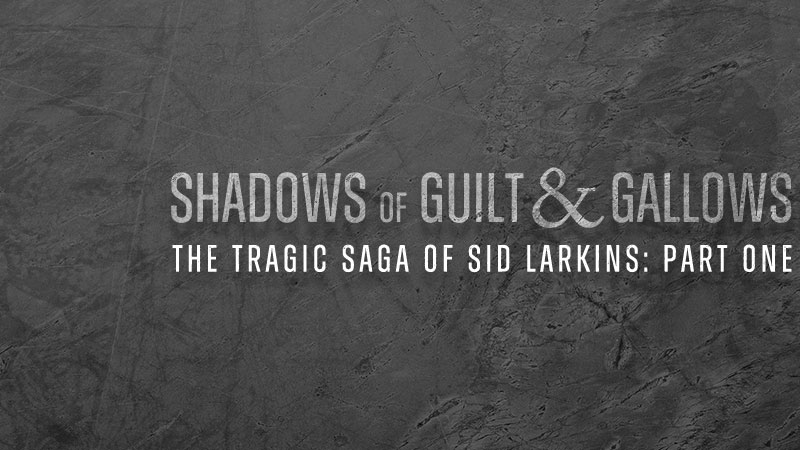
Sid Larkins was noted for being cool, collected, resentful, and accepting of his place on the gallows after the murder of Josie Hill. This is a fictional account of an inmate witnessing Sid’s time at the prison and his death at the gallows.

I’ve seen a lot of men walk to their deaths, but none like Sid Larkins. Most of them are scared out of their wits, begging for mercy or praying to some God they’ve never met until they’re staring down the barrel of their own mortality. But Sid? He was different.
They brought him into the prison months before, after he was sentenced for killing that poor girl, Josie Hill. The whole town was buzzing about it. “The man’s a monster,” they said. But when they finally locked him up, I saw something else in him—a strange calmness that didn’t fit the stories being told.
Prison’s a hard place. It has a way of gnawing at a man’s soul, turning him into something he never imagined. But Sid? He walked those cold, concrete corridors like he was on a Sunday stroll. Didn’t flinch, didn’t bow his head, and didn’t beg. You could see it in his eyes—he wasn’t fighting against the tide. He was riding it, straight to the end.
We got to talking a few times, Sid and me. He wasn’t much for long conversations, but when he spoke, there was a weight to his words. He told me about Josie, how he met her dealing faro in Salt Lake, how he fell for her so hard that he couldn’t see straight. “She was trouble,” he’d say, “but I loved her all the same.” He didn’t deny what he did, not to me. But he always said the same thing: “I was drunk. Drunk and crazed. That’s the truth of it.”
He never talked about the Callahan murder much, except to swear up and down that he had nothing to do with it. Some nights, though, when the prison was quiet, I couldn’t speak to his demeanor at night, when the darkness of the shadows tends to confront a convict’s past wrongdoings. But in the daylight, Sid was all nerve and steel.
The morning of his hanging, they came for him early. I watched him dress in that new suit, like he was getting ready for Sunday church. He even took the time to shave, standing there in front of a little cracked mirror like it was any other day. When they led him out to the gallows, I saw him give the sheriff a few pointers on how to adjust the rope and the straps. Can you believe that? Here’s a man about to die, and he’s telling them how to do their job. But that was Sid. He wanted everything just right.
As they put the noose around his neck, he looked out at the small crowd that had gathered to watch. “My friends,” he said, his voice steady, “a Savior died on the cross for you and for me. I believe He is mine. I bid you a long farewell. Adieu.” Then they dropped the black cap over his head, pulled the lever, and just like that, it was over.
He didn’t twitch, didn’t struggle. The papers later said it was almost instantaneous. I don’t know if I’d call Sid Larkins a hero, or even a good man. But I’ll tell you this: he met his end with more dignity than most. I’ll never forget the day I watched Sid Larkins take his last walk. They say you can tell a lot about a man by the way he meets his end. If that’s true, then Sid Larkins was more than just a murderer. He was a man who, in his final moments, found a way to stand tall, even as his world crumbled around him.
This is a fictional account of an inmate witnessing Sid’s time at the prison and his death at the gallows.



